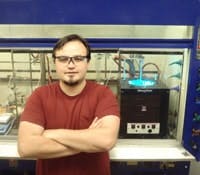Light Simplifies Synthesis
Ultraviolet (UV) light provides a simpler, more environmental friendly way to attach phosphorus to organic compounds, report researchers at the Massachusetts Institute of Technology, Cambridge, Mass. Their approach avoids the use of chlorine, which can pose health and safety risks, and produces an organophosphorus compound in a single step.
"…The surprising thing about this work is that it was not discovered long ago. There is nothing complicated about it, and the starting materials are readily available and needed only to be mixed together and irradiated with UV light," says Christopher Cummins, a chemistry professor at the school.
"…The elimination of chlorine would be a huge advantage for the industry," he notes. "However, another intermediate in the phosphorus industry that would be good to avoid is PH3, and our process may allow this as well to be circumvented."
He drew inspiration from a 1937 paper detailing that white phosphorus, also known as P4, could be broken into two P2 molecules with UV light. He decided to see what would happen if he broke apart P4 with UV light in the presence of organic molecules that have an unsaturated carbon-carbon bond (1,3-dienes). He and graduate student Daniel Tofan exposed the white phosphorus to UV light for 12 hours and produced a tetra-organo diphosphane.
"It's amazing to realize that nobody thought earlier about such a simple approach to incorporate phosphorus into organic molecules," notes Guy Bertrand, chemistry professor at the University of California, Riverside. "Such a synthetic approach to organophosphorus compounds is indeed urgent, since the old (chlorine-based) phosphorus chemistry has a lot of undesirable consequences on our environment."
The new reaction can't produce industrial quantities of compounds, says Bertrand, who was not involved in the research, but may prompt research that could lead to such prospects.
One near-term goal of Cummins' ongoing research is probing the properties of the new organodiphosphorus compounds as ligands for a range of transition metals including nickel. "The preliminary results suggest possible applications as building blocks for supramolecular chemistry in addition to precursors to new materials," he says.
Other goals include looking for other organic molecules that may accept phosphorus under the same photochemical conditions, and synthesizing a polymer containing P-P bonds in its main chain and determining its properties.
A key challenge, notes Cummins, is to improve currently low yields by optimizing reaction conditions. This will involve a careful study of the wavelength dependence of the process.

